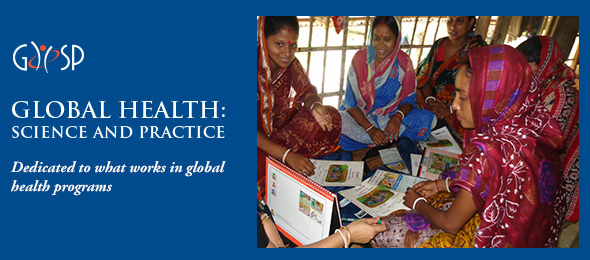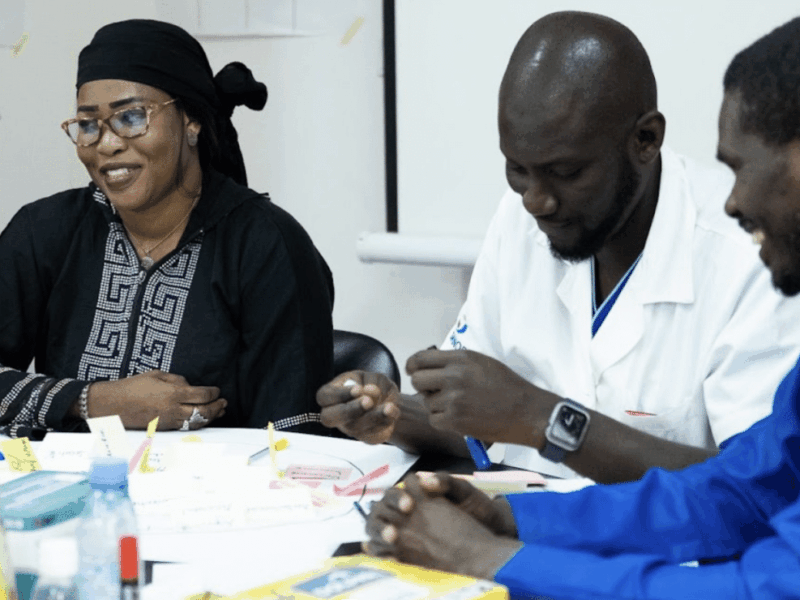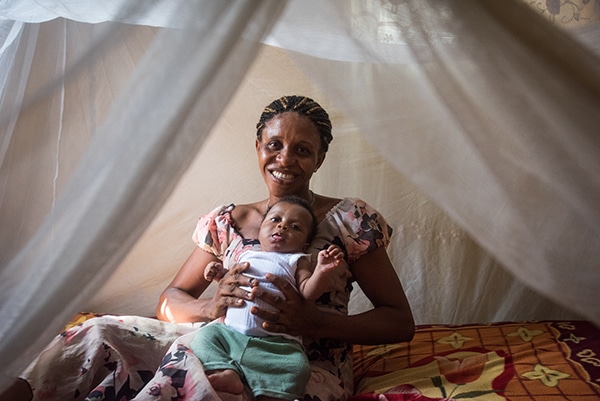Should family planning providers counsel women first about the most effective methods—long-acting reversible contraceptives (LARCs) and permanent methods? Dubbed by some as “LARC-first” counseling, proactive counseling about LARCs (and permanent methods for women who want to end childbearing) is “simple, common sense,” assert John Stanback and his colleagues from FHI 360 in the latest issue of Global Health: Science and Practice (GHSP).
Contraceptive effectiveness is one of the most important characteristics women consider when choosing a method. But women are often not well informed about effectiveness of methods. For these reasons, Stanback et al. argue that to provide truly informed choice, providers should offer proactive counseling based on the WHO tiered-effectiveness chart that starts with the relative effectiveness of various methods. Some caution, however, that such proactive counseling could potentially become too directive—or even coercive—in some situations, and so instead they argue for “women-first” counseling by structuring counseling, for example, around women’s rankings of their priorities for a method—whether those priorities are effectiveness, avoiding certain side effects, or the ability to start and stop the method on their own.
Other Articles in the Current Installment of GHSP
Family Planning/Reproductive Health
- What does NOT work in adolescent sexual and reproductive health. Authors Chandra-Mouli, Lane, and Wong, from WHO, USAID, and UNFPA, respectively, review the evidence on adolescent sexual and reproductive health interventions that are commonly accepted as best practices in the field. They find that many of these practices, such as youth centers and peer education, have actually been ineffective while others that are effective when implemented well, such as comprehensive sexuality education, have such considerable implementation requirements that the approaches have tended to flounder.
- Social and cultural changes that follow the demographic transition. The demographic transition from high to low levels of mortality and fertility brings about changes that make each stage of life longer while creating new ones—a phenomenon that Ariel Pablos-Mendez, Scott Radloff, and colleagues call the “demographic stretch of the arc of life.” In this commentary, the authors explore the social and cultural implications of this demographic stretch and propose recommendations for a research agenda to better understand the phenomenon.
- Task shifting contraceptive implant provision to community health extension workers. An operations research study in northern Nigeria demonstrated that community health extension workers could safely and effectively provide contraceptive implants. Most of these health workers achieved competency after just 5 client insertions. But Charyeva et al. report that the health workers inserted, on average, only 4 implants per health facility per month, suggesting greater outreach was needed to build demand among potential clients. In a related GHSP editorial, Lois Schaefer from USAID calls for such pilot interventions to be designed with an eye to local capacity in sustaining the task sharing intervention.
- Poor-rich gaps in reproductive health status. John Ross analyzes gaps in equity between the poor and the rich in contraceptive use and other reproductive health indicators across 46 low- and middle-income countries. He finds the poor-rich gap in contraceptive use overall is narrowing and more so where family planning programs are stronger—but there are differences between regions and countries, particularly in sub-Saharan Africa, where contraceptive use gaps have not diminished in many countries.
- Using logistics data to estimate contraceptive prevalence. Policy makers, donors, and other stakeholders need up-to-date contraceptive prevalence data to measure progress in family planning programs against country targets and global initiatives. Marc Cunningham from John Snow and colleagues developed and evaluated three models using logistics data to generate country-level contraceptive prevalence estimates for injectables, oral contraceptives, and male condoms. The contraceptive prevalence estimates from the three models correlated well with the referent Demographic and Health Survey data, demonstrating that current logistics data can provide useful prevalence estimates when timely population-based survey data are unavailable.
Health Systems
- Health systems themes in sub-Saharan African literature. Using a bibliometric procedure, James Phillips and colleagues from Columbia University analyze more than 17,000 articles on health systems themes in sub-Saharan Africa published during the Millennium Development Goal (MDG) era. They find that while the volume of such literature has been expanding since 2000, focus has remained generally on categorical health themes rather than on systems concepts.
Maternal and Child Health
- The Care Group approach to improving maternal and child health. Care Groups use paid facilitators to work with groups of volunteers who, in turn, motivate mothers to adopt key maternal and child health behaviors. In this 2-part paper, Henry Perry and colleagues first describe the Care Group approach in detail and then summarize data from both the peer-review and gray literature on the child survival outcomes achieved using this innovative approach. In a related editorial, GHSP compares Care Groups with another woman’s group approach—that of Participatory Women’s Groups—which has been assessed using rigorous randomized controlled trials. The challenge with both of these approaches, GHSP argues, is distilling the elements of success from each approach and applying them in real-world settings at scale.
- Evidence-based diagnostic models for assessing dehydration in children with acute diarrhea. Diarrhea remains one of the most common and potentially dangerous conditions affecting children worldwide, and accurately assessing dehydration status in such children is critical for determining the course of treatment. Levine et al. report on the first empirically derived and internally validated diagnostic models for assessing dehydration status in children, based on a cohort study conducted in Dhaka, Bangladesh.
Mental Health
- Institutional vs. family-based care for orphans and separated children. Worldwide there are more than 150 million orphaned and separated children. It is assumed that these children are better off in family-based settings than in institutional care, where there is a perceived increased risk for traumatic experiences. While this may have been demonstrated in some countries and regions, such as Eastern Europe, Christine Gray from the University of North Carolina and her colleagues from Duke University find that in 5 low- and middle-income countries, prevalence of reported traumatic events was no worse among those in institutional care than among those in family-based care. In an accompanying editorial, Paula Braitstein from the University of Toronto argues that improving the quality of care for orphaned and separated children should be the paramount priority—regardless of the care setting.
Nutrition
- Regulatory monitoring of food fortification. Food fortification helps improve the micronutrient status of populations, but underfortified foods often make into the market, making it difficult to measure the health impact of fortification programs. A qualitative study led by Corey Luthringer from the Global Alliance for Improved Nutrition (GAIN) with other colleagues from GAIN and from Project Healthy Children identified barriers and good practices to effective regulatory monitoring of the food fortification industry.
Tools
- Using GIS to scale-up voluntary medical male circumcision (VMMC) services. Mahler and colleagues from Jhpiego, along with co-authors Njeuhmeli from USAID and Lija from the Ministry of Health in Tanzania, share their experiences with using GIS (geographic information systems) to strategically plan the location of VMMC outreach campaigns in two regions of Tanzania.
- New wireless “smart” sensor to monitor vital signs in patients with Ebola. Steinhubl, Marriott, and Wegerich describe a new wireless sensor technology currently being field-tested in an Ebola Treatment Unit in Sierra Leone. The technology monitors multiple vital signs continuously and remotely, thus reducing the risk of exposing health care workers to pathogens.
Read the full-text of these articles as well as other articles from past issues free-of-charge.
Submit your manuscript for free — there are no fees to submit or publish in GHSP. Questions or comments? Contact the GHSP editors at editorialoffice@ghspjournal.org.
[vc_cta_button call_text=”Sign up to receive email alerts when new GHSP articles and issues are published: ” title=”Subscribe today. ” target=”_blank” color=”btn-success” icon=”wpb_mail” size=”btn-large” position=”cta_align_bottom” href=”https://www.ghspjournal.org/cgi/alerts”]





